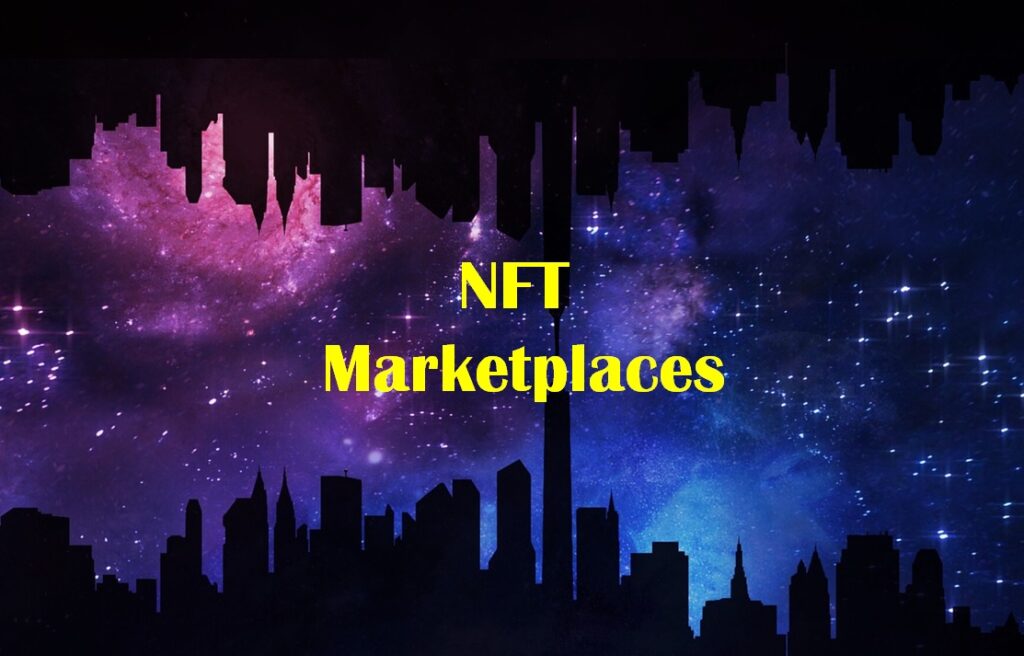Only the laziest person today is not discussing NFT! The incredible surge in the growth of digital art is the most interesting trend in recent times. NFT is growing in popularity not only among collectors, but also among investors and traders. Let’s figure out how to get into NFT trading and how to get into nft market.
What is NFT?
Unlike cryptocurrencies and ordinary tokens, NFTs are unique: each exists in a single copy. NFTs are works of art, real estate, or, for example, artifacts in NFT games; they are all unique and cannot be copied.
What is an NFT Marketplace?
NFT marketplaces are platforms or, simply put, “NFT malls” where you can sell, get ,NFTs or trade them. They are created specifically for getting into NFTs and all kinds of digital works are stored, displayed, sold and in some cases even created here.
There are many such resources today, but we’ll focus on the 5 most popular and interesting ones. Let’s go!
1. Liquidifty
Liquidifty marketplace is one of the best NFT marketplaces and a Launchpad, offers its users a wide range of crypto and NFT investing options such as IDO, INO, cash lotteries, airdrops, and others.
The interface is simple and therefore very powerful, and there you will find several tools that will allow anyone to start making money, either from mining or NFT betting. You’ll be able to create your own unique collections and your own store in just a minute.
Liquidifty offers digital artists opportunities such as quick and easy NFT creation. Even newcomers to the NFT world will find it easy to create their first NFT and start making money from it. To make sure you don’t miss anything, we’ve created a step-by-step guide for anyone who still thinks they don’t know much about this world and wants to explore the possibilities of NFT.
2. Opensea
OpenSea is one of the largest and most popular NFT marketplaces today. The variety of offerings overshadows many other marketplaces. Thousands of different NFTs are represented here: from paintings by contemporary artists to game cards. In addition, the platform has several auction features and is fully integrated into the crypto infrastructure.
OpenSea users must pay a commission when putting their artwork up for sale. This fee depends on the demand in the network, time of day, and many other factors and sometimes can even exceed the price of the created artwork, most often it is $70-100.
1. SuperRare
It is a virtual gallery of digital art. Each work is authentically created by the artist online and is regarded as a crypto-collectible digital object that can be owned and traded. Artists develop a specialized certificate to prove their authorship.
The super rare platform is in its early stages and is not yet fully deployed. However, it just recently raised $9 million from investors to further develop and relaunch by next year.
Placing your work is free, but SuperRare deducts 15% of the transaction on the first sale. The platform also picks up a 3% commission on each successful NFT sale.
2. Mintable
Another popular marketplace allows you to place and sell NFTs without commissions. Its peculiarity is the possibility to create your own token store. This is an alternative to collections offered by other marketplaces. A store is essentially a smart contract for creating NFTs.
Mintable users can put digital artwork, domain names, music videos, amateur videos, and templates up for sale. The focus of this site is not so much to create and collect digital art, but rather to monetize any electronic assets.
Anyone can register on Mintable. To buy or sell NFT, you will need to link a MetaMask, Trust Wallet, or Rainbow cryptocurrency wallet to your account. Calculations are made in the cryptocurrency ETH.
3. Enjin
The eco-friendly marketplace specializes in gaming tokens. The marketplace is serious about environmental protection and aims to switch to carbon-neutral NFTs. This is planned to happen by 2030.
Cryptocurrency and blockchain transactions require a lot of computing power for coin minting and authentication. This is detrimental to the environment. The Enjin platform plans to use a greener “proof-of-stake” approach, which requires fewer computing partners to prove authenticity. This reduces the amount of energy consumed.
Enjin uses decentralized management using an internal EFI token. The same token is used for all payments in the marketplace.
How to get into the NFT market
The industry continues to evolve, and we are already seeing a lot of promising projects. The popularity of non-interchangeable tokens will only grow in the coming years as innovative applications for digitizing art, property rights, collectibles, or just for fun emerge.
The value of NFT grows every year. So the important question today is how to get NFTs. It is now not only a way to express oneself through digital artwork, but also a reliable financial tool. For example, non-exchangeable tokens can be used for investments or as collateral. NFTs are shown on screens in Times Square and sold at Sotheby’s auctions. But the main venues for NFT storage and transactions remain marketplaces.
Today there are several dozen active NFT marketplaces around the world. It is difficult to name the exact number of such websites since new ones appear regularly. Some marketplaces are created for narrowly focused projects, for example, for fans of a particular game, some are experimental in nature, and some are designed for a wide audience. There are also platforms for well-known artists on which newcomers are denied access.
With this huge amount of marketplaces the question of how do I get an NFT is no longer challenging. You can feel free to choose the marketplace you want and the once that suits you in terms of conditions, fees, and other details.




